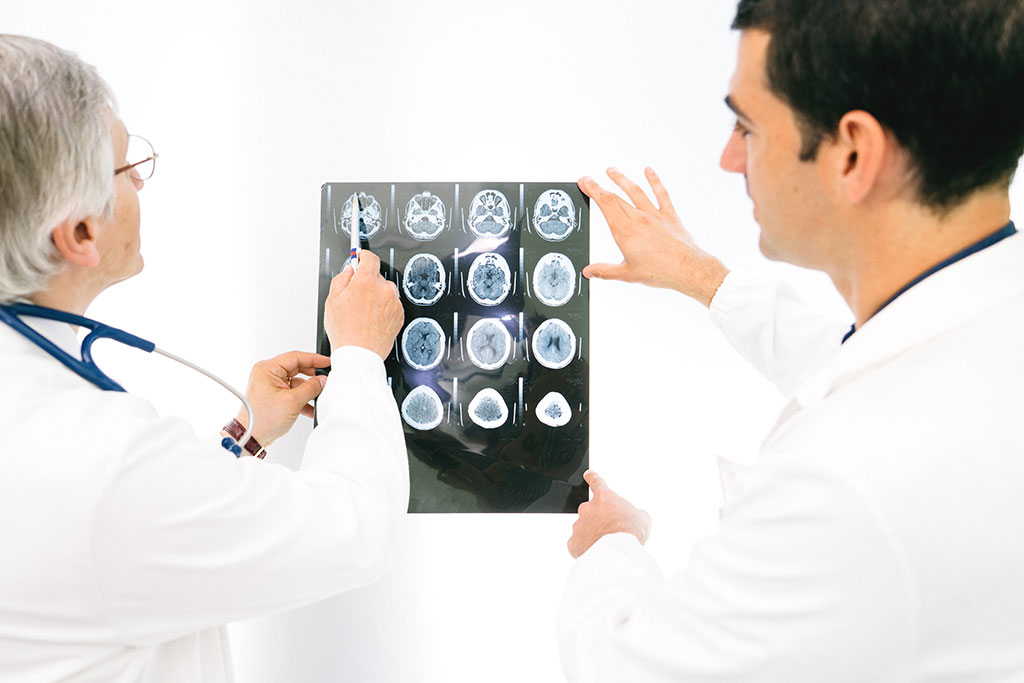
Stroke – recognise the signs
A stroke happens when the blood flow to the brain is interrupted. If oxygen-rich blood doesn’t reach the brain, brain cells begin to die and permanent brain damage can occur. There are two types of brain stroke. With an ischemic stroke, a blood clot blocks the flow of blood to the brain. If you have a haemorrhagic stroke, a weak blood vessel bursts and you experience bleeding into the brain.
According to the Stroke Foundation, strokes are one of the leading causes of death in Australia. In 2017 there will be more than 470,000 people living with the effects of stroke. This is predicted to increase to 709,000 by 2032. Around 30% of stroke survivors are of working age [under the age of 65]. This equates to around 1 in 3 of the 55,000 strokes each year.
Depending on the severity of the stroke and how long the blood flow to the brain was interrupted, a stroke can cause temporary or permanent disability. Many people survive a stroke and recover with rehabilitation such as occupational, speech, or physical therapy.
The sooner you recognize signs of a stroke and seek medical attention, the better your chances of recovering and avoiding serious brain damage or disability.
SYMPTOMS OF A STROKE
Recognizing the symptoms of a stroke and getting help as quickly as possible can lead to a better outlook. Early intervention can reduce the amount of time the blood flow to your brain is disrupted.
1. Sudden weakness
Sudden weakness or numbness in your arms, legs, or face is a typical sign of stroke, especially if you experience weakness on only one side of the body. If you smile and look in the mirror, you may notice that one side of your face droops. If you try and raise both arms, you may have difficulty lifting one side. Depending on the severity, a stroke can also lead to paralysis on one side of your body.
2. Sudden confusion
A stroke can cause sudden confusion. For example, if you’re typing on your computer or having a conversation, you may suddenly have difficulty speaking, thinking, or understanding speech.
3. Sudden changes in vision
Loss of vision or difficulty seeing in one or both eyes is another symptom of stroke. You may suddenly lose your vision completely, or experience blurred or double vision.
4. Sudden loss of balance
Due to weakness on one side of the body, you may experience difficulty with walking, loss of balance or coordination, or dizziness.
5. Sudden headache
If a severe headache develops suddenly with no known cause, you might be having a stroke. This headache may be accompanied by dizziness or vomiting.
If you have a history of migraine headaches, it may be difficult to identify this symptom or vision problems as signs of stroke. Talk to your doctor about how to determine whether you’re having a stroke or a migraine. Because strokes can be life-threatening, always seek immediate medical help if you suspect symptoms of a stroke.
FAST ACTIONS AFTER STROKE SYMPTOMS
If you’re having a stroke, you may experience one or multiple symptoms. Although you’re likely to recognize odd symptoms or feel like something isn’t quite right with your body, you may not realize you have a serious problem until it’s too late.
Stroke symptoms can develop slowly over hours or days. If you have a mini-stroke, also known as transient ischemic attack (TIA), symptoms are temporary and usually improve within one or two hours. In this case, you may blame sudden symptoms on stress, a migraine, or nerve problems.
Any signs or symptoms of stroke require further investigation by a doctor. If you get to the hospital within three hours of the first symptoms of an ischemic stroke, your doctor can give you a medication to dissolve blood clots and restore blood flow to the brain. Fast action improves your odds of recovering fully after a stroke. It also reduces the severity of disabilities that can result from a stroke.
A simple FAST test can help you identify a stroke in yourself and others.
F (Face): Ask the person to smile. Look for signs of drooping on one side of the face.
A (Arms): Ask the person to raise their arms. Look for a downward drift in one arm.
S (Speech): Ask the person to repeat a phrase without slurring. For example, you could have them say, “The early bird catches the worm.”
T (Time): Waste no time. Immediately call your local emergency services if you or someone you know shows signs of a stroke.
RISK FACTORS
Anyone can have a stroke, but some people are at a higher risk. Knowing you have an increased risk for stroke can help you and your family and friends prepare in case you experience symptoms. Following are some known risk factors:
Conditions
- history of stroke or heart attack
- high cholesterol
- high blood pressure
- heart disease
- diabetes
- sickle cell disease
Lifestyle choices and behaviours
- unhealthy diet
- obesity
- tobacco use
- physical inactivity
- consuming too much alcohol
Additional risk factors
- family history
- age: being over the age of 55
- gender: women are at greater risk than men
- race
Some risk factors, such as your age and family history, are out of your control. You can reduce other risk factors, by working with your doctor and making necessary lifestyle changes.
OUTLOOK
Early treatment can increase your risk for survival and decrease your risk for more serious complications of stroke, which can include:
• paralysis or muscle weakness on one side of the body
• difficulty swallowing or speaking
• memory loss or difficulty thinking and understanding language
• pain, numbness, or tingling sensations on part of the body
• changes in behaviour or mood
Call your local emergency services immediately if you think you or someone near you is having a stroke.


